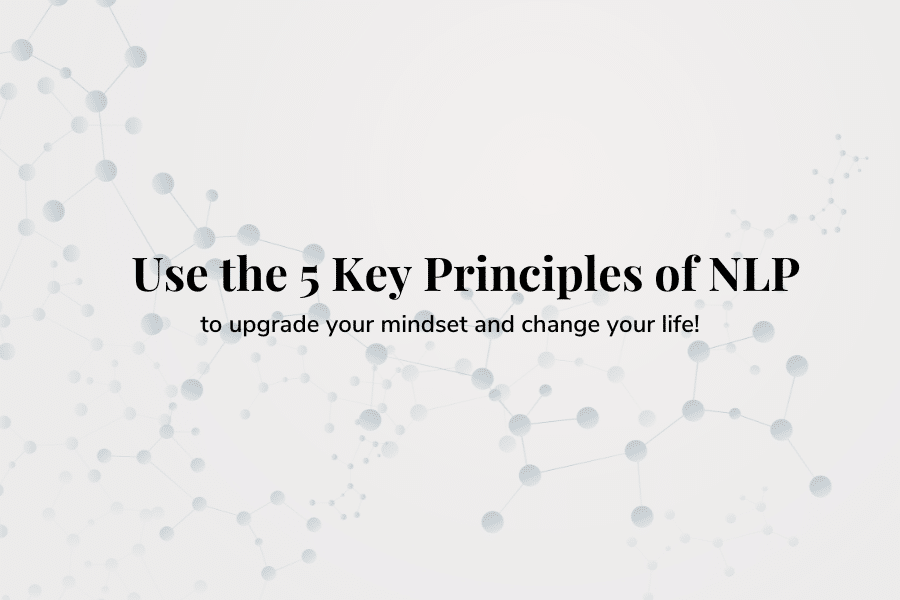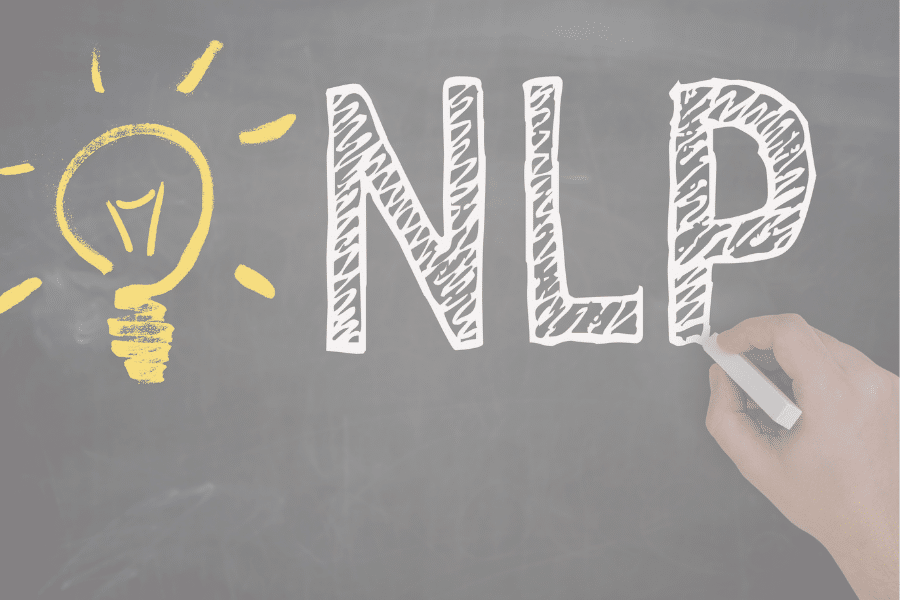
Understanding the principles of NLP (neurolinguistic programming) is key when it comes to rewiring and upgrading your mindset. Not sure what those are? Don’t worry, we got you!
This Post is All About using the 5 Key Principles of NLP to Upgrade Your Mindset and Change Your Life.
When I first learned about NLP I realized that I had already been familiar with a few of the concepts, I just didn’t know it was NLP. Neurolinguistic programming plays a big part in personal development, and the principles are commonly found in therapeutic modalities and even manifestation.
NLP tends to get a bit of a bad rap, particularly amongst the scientific community. Even though there have been countless studies proving its effectiveness (study, study). In my personal opinion, people like to debunk NLP because it’s a common practice in the coaching community, which is an unregulated industry that causes contention with licensed mental health practitioners.
Like most personal development practices, you should take what resonates and supports you and leave what doesn’t.
Defining NLP
So what is NLP? Let’s break the definition down into parts.

Neuro: Refers to neurology, our nervous system, and the ways we process information (the five senses).
Linguistic: Refers to language, both verbal and non-verbal (body cues).
Programming: Refers to the patterns, beliefs, and information that are stored in our minds.
Essentially, on a high level NLP is the study of the brain, our physiology, and how our thoughts impact our behavior and results.
5 Key Principles of NLP
1. Cause and/or Effect
In NLP you can either be the cause of a situation or the effect. Meaning, that you can either take action and be the cause driving your results forward, or you deal with the effects of letting things happen without you.
Cause and effect refers to the impact that one action has on the other. Whatever action you take (cause) creates a result (effect). This applies not only to our actions but also to our thoughts; they create a ripple effect. We think a thought, and that thought creates a reaction or alters our behavior which has a result.
2. Results vs Excuses
We either get the results we intended, or we have excuses. “This didn’t work because of XYZ” or “I wanted to get this done today but then XYZ happened”, are all excuses. In the practice of NLP, we believe that all results are possible and there is no such thing as failure. If you didn’t achieve the desired result, you now have data on what doesn’t work and can try a new route.
In my personal opinion, sometimes life really does just get in the way, and there are real-life barriers such as racism or lack of accessibility. In general, though, all results are possible, it’s just a matter of how many solutions we are willing to try to get the result.
3. Perception is Projection

Here’s an NLP principle that tends to ruffle a few feathers (it tripped me up a bit at first too), your reality is a projection of the mind. Everything that you perceive as truth is a projection. We all have a unique perspective to offer because each one of us is living a different reality.
If you believe that nothing ever works out for you, your brain is going to search for evidence of that truth. If you believe you’re the luckiest girl in the world, guess what? your brain will search for the evidence of that truth. If you want to project a different reality, change your perception.
4. Mind-Body Connection
Our minds and our bodies are connected, they’re not separate (duh! Our brains are IN our bodies). Though society tends to treat them as separate, our physical and mental health are intrinsically linked. If we work to strengthen our bodies we will inevitably strengthen our minds. We can actually analyze our physiology such as eye movement, posture, etc to determine someone’s thoughts and thought process.

5. Responsibility for Results
In NLP we are 100% responsible for our results, and this is a positive thing! If we don’t like our current results, we have the power to change them. Again, I’d like to stress that we do not have control over things like war, racism, lack of accessibility, etc but in these cases what we do have control over is how we react, or how we let these things affect us.
It’s not your boss’s fault you didn’t get a raise, it’s not the train’s fault you’re late for a meeting, it’s not your partner’s fault that you’re unhappy in your relationship. All of those results are your responsibility in the eyes of NLP because you have control over the way you THINK about those situations. Remember, perception is projection.
Using NLP in Your Everyday
Here are some easy ways you can put the 5 principles of NLP into practice:
- Ask yourself “How am I perceiving this situation? and how is it impacting my results?”
- Do a meditation to ground yourself in your body
- Gabby Bernstein’s choose again method (don’t like a thought? Choose another one!)
- Analyze the results you currently have and ask “What must I be thinking/believing, for this to be my reality?”
- Start a thought log to analyze your thoughts
- Join a weekly fitness class
- Start a journalling practice
This post was all about using the 5 Key Principles of NLP to Upgrade Your Mindset and Change Your Life.
Thank you for reading Sipping on Gratitude, the blog where we spill the tea on all things personal growth and development. If you enjoyed this post then you should also check out:






[…] Use the 5 Key Principles of NLP to Upgrade Your Mindset and Change Your Life […]